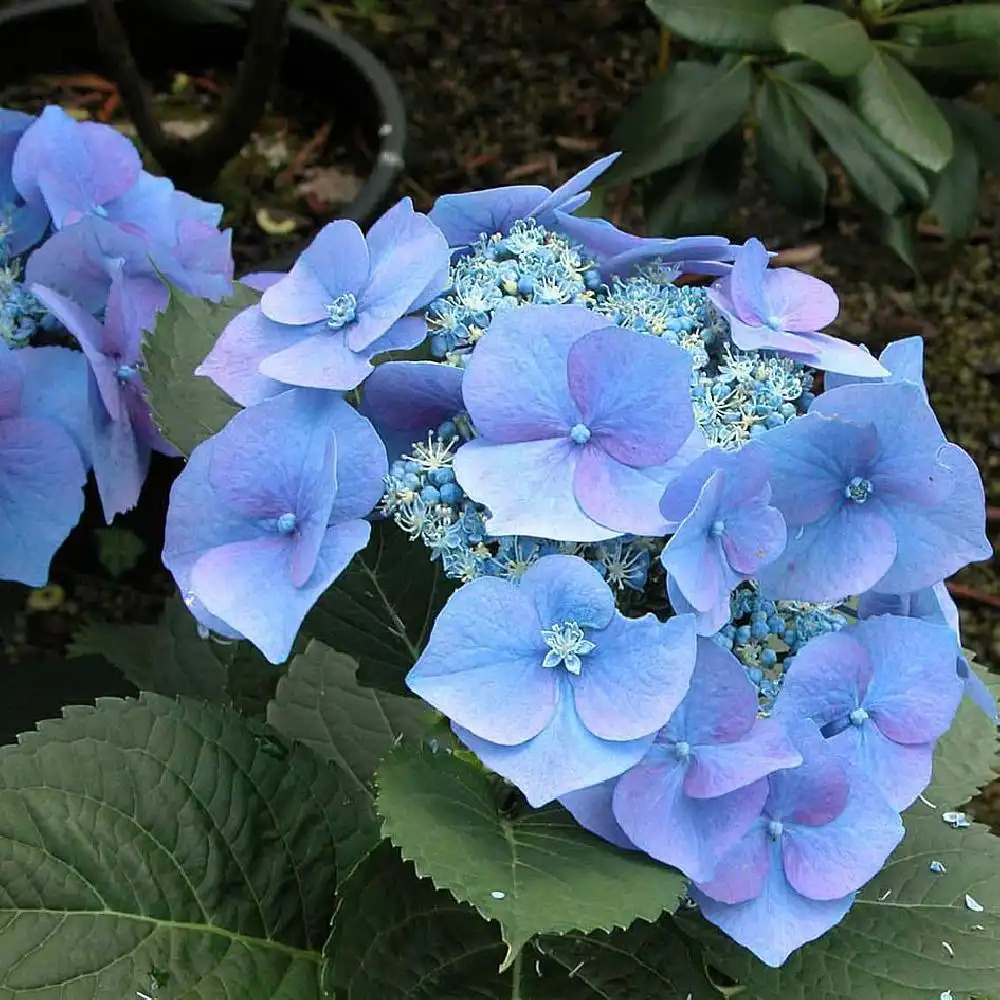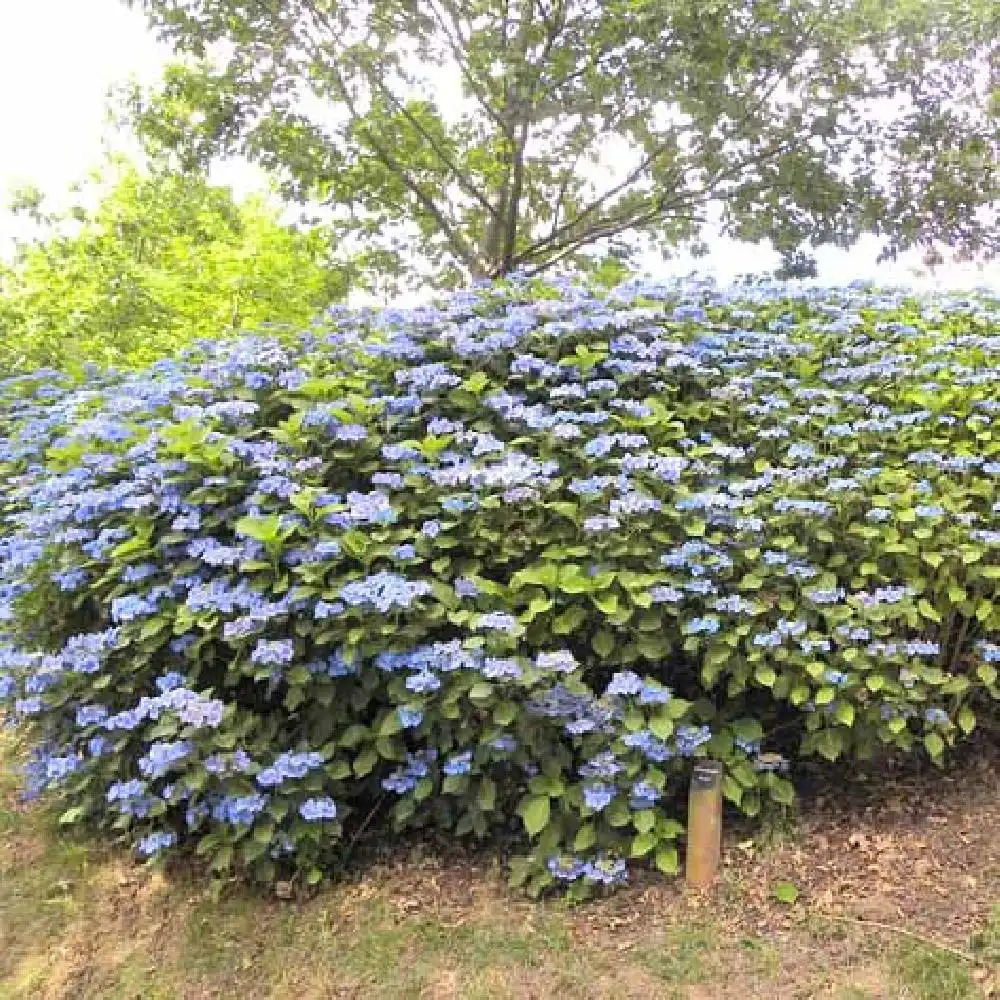The Blue Tit Hydrangea: A Stunning Addition To Any Garden
The Blue Tit Hydrangea: A Stunning Addition to Any Garden
Hydrangeas are a popular choice for gardens of all sizes, thanks to their beautiful blooms and relatively easy care. One of the most stunning varieties of hydrangea is the Blue Tit Hydrangea. These plants are known for their large, blue flowers that can add a touch of elegance to any yard.
In this blog post, we will take a closer look at the Blue Tit Hydrangea. We will discuss its history, appearance, and care requirements. We will also provide some tips on how to choose the right Blue Tit Hydrangea for your garden.
History of the Blue Tit Hydrangea
The Blue Tit Hydrangea is a relatively new variety of hydrangea, first introduced in the early 1900s. It is thought to be a cross between two other hydrangea varieties, the French Hydrangea and the Japanese Hydrangea.
The Blue Tit Hydrangea quickly became popular due to its beautiful blue flowers. The flowers are typically larger than those of other hydrangea varieties, and they can last for several weeks. The plant also grows well in a variety of climates, making it a good choice for gardens in many parts of the world.
Appearance of the Blue Tit Hydrangea
The Blue Tit Hydrangea is a deciduous shrub that can grow up to 6 feet tall. The leaves are dark green and oval-shaped. The flowers are produced in large, rounded clusters. The flowers are typically blue, but they can also be pink or white.
The Blue Tit Hydrangea blooms in the summer, and the flowers can last for several weeks. The flowers are a popular choice for cutting and using in bouquets.
Care Requirements of the Blue Tit Hydrangea
The Blue Tit Hydrangea is a relatively easy plant to care for. It prefers full sun or partial shade, and it needs well-drained soil. The plant should be watered regularly, especially during hot weather.
The Blue Tit Hydrangea does not need to be fertilized often. A light application of fertilizer in the spring will help to promote blooming.
The Blue Tit Hydrangea is a hardy plant that can withstand cold winters. However, it is a good idea to mulch the plant in the fall to protect the roots from frost.
Choosing the Right Blue Tit Hydrangea for Your Garden
There are several different varieties of Blue Tit Hydrangea available. When choosing a plant for your garden, consider the following factors:
- Size: Blue Tit Hydrangeas can grow up to 6 feet tall. Choose a plant that will fit in the space you have available.
- Color: Blue Tit Hydrangeas can bloom in blue, pink, or white. Choose a color that will complement the other plants in your garden.
- Climate: Blue Tit Hydrangeas are hardy in most climates. However, if you live in an area with cold winters, choose a variety that is known for its cold hardiness.
With a little care, the Blue Tit Hydrangea can be a stunning addition to any garden. These plants are known for their beautiful blooms and relatively easy care requirements. If you are looking for a new hydrangea variety to add to your yard, the Blue Tit Hydrangea is a great option.
If you're looking for a beautiful and hardy hydrangea variety, then Hydrangea macrophylla 'Blaumeise' is a great choice. This lacecap hydrangea is known for its large, blue flowers that bloom from early summer to late fall. The flowers are arranged in a flat, circular shape, with a central cluster of smaller, fertile flowers. The foliage is also attractive, with glossy, dark green leaves.
'Blaumeise' is a relatively easy hydrangea to care for. It prefers part shade, but can tolerate full sun if the soil is kept moist. The soil should be rich and well-drained. 'Blaumeise' is also a heavy feeder, so it will benefit from regular fertilization.
If you're interested in learning more about Hydrangea macrophylla 'Blaumeise,' I recommend visiting . This website has a wealth of information about this variety, including planting instructions, care tips, and troubleshooting advice.
FAQ of hydrangea macrophylla blaumeise
- What are the care requirements for Hydrangea macrophylla Blaumeise?
Hydrangea macrophylla Blaumeise is a relatively easy-care plant, but it does have some specific needs. It prefers full sun to partial shade and moist, well-drained soil. It is also important to fertilize hydrangeas regularly, especially during the growing season.
- How can I make the flowers of my Hydrangea macrophylla Blaumeise bluer?
The color of hydrangea flowers is affected by the pH of the soil. In acidic soil, the flowers will be blue. To make the flowers of your Hydrangea macrophylla Blaumeise bluer, you can add aluminum sulfate to the soil. You can also add compost or manure to the soil, as these materials can help to lower the pH.
- Where is the best place to plant Hydrangea macrophylla Blaumeise?
The best place to plant Hydrangea macrophylla Blaumeise is in a spot that receives morning sun and afternoon shade. This will help to prevent the leaves from burning in the hot afternoon sun. Hydrangeas also need moist soil, so it is important to plant them in a spot where they will not dry out.
- How do I prune Hydrangea macrophylla Blaumeise?
Hydrangeas can be pruned in the spring or fall. If you prune in the spring, you should remove any dead or damaged branches. You can also prune back some of the older branches to encourage new growth. If you prune in the fall, you should only remove dead or damaged branches.
- What are some common pests and diseases of Hydrangea macrophylla Blaumeise?
Hydrangeas are susceptible to a few common pests and diseases, including:
- Aphids: Aphids are small, sap-sucking insects that can damage the leaves and flowers of hydrangeas. They can be controlled with insecticidal soap or neem oil.
- Scale insects: Scale insects are small, hard-shelled insects that can attach themselves to the stems and leaves of hydrangeas. They can be controlled with horticultural oil or insecticidal soap.
- Leaf spot: Leaf spot is a fungal disease that can cause brown or black spots on the leaves of hydrangeas. It can be controlled with a fungicide.
Image of hydrangea macrophylla blaumeise
5 images of hydrangea macrophylla blaumeise from Pinterest:
- Image 1: A large, lush hydrangea macrophylla blaumeise in full bloom. The flowers are a deep blue color with a slightly wavy edge. The plant is growing in a shady spot in the garden.

- Image 2: A close-up of the flowers of hydrangea macrophylla blaumeise. The individual flowers are small and star-shaped, with a deep blue color. The petals are slightly overlapping, giving the flower a full and rounded appearance.

- Image 3: A hydrangea macrophylla blaumeise plant in a pot. The plant is healthy and well-maintained, with large, dark green leaves and a profusion of blue flowers. The pot is placed on a patio in partial shade.

- Image 4: A hydrangea macrophylla blaumeise plant in a garden setting. The plant is surrounded by other flowers and shrubs, and it is in full bloom. The blue flowers of the hydrangea stand out against the green foliage of the other plants.

- Image 5: A hydrangea macrophylla blaumeise plant in a vase. The flowers are cut and arranged in a vase, and they are displayed on a table in a living room. The blue flowers of the hydrangea add a touch of color and elegance to the room.

Post a Comment for "The Blue Tit Hydrangea: A Stunning Addition To Any Garden"